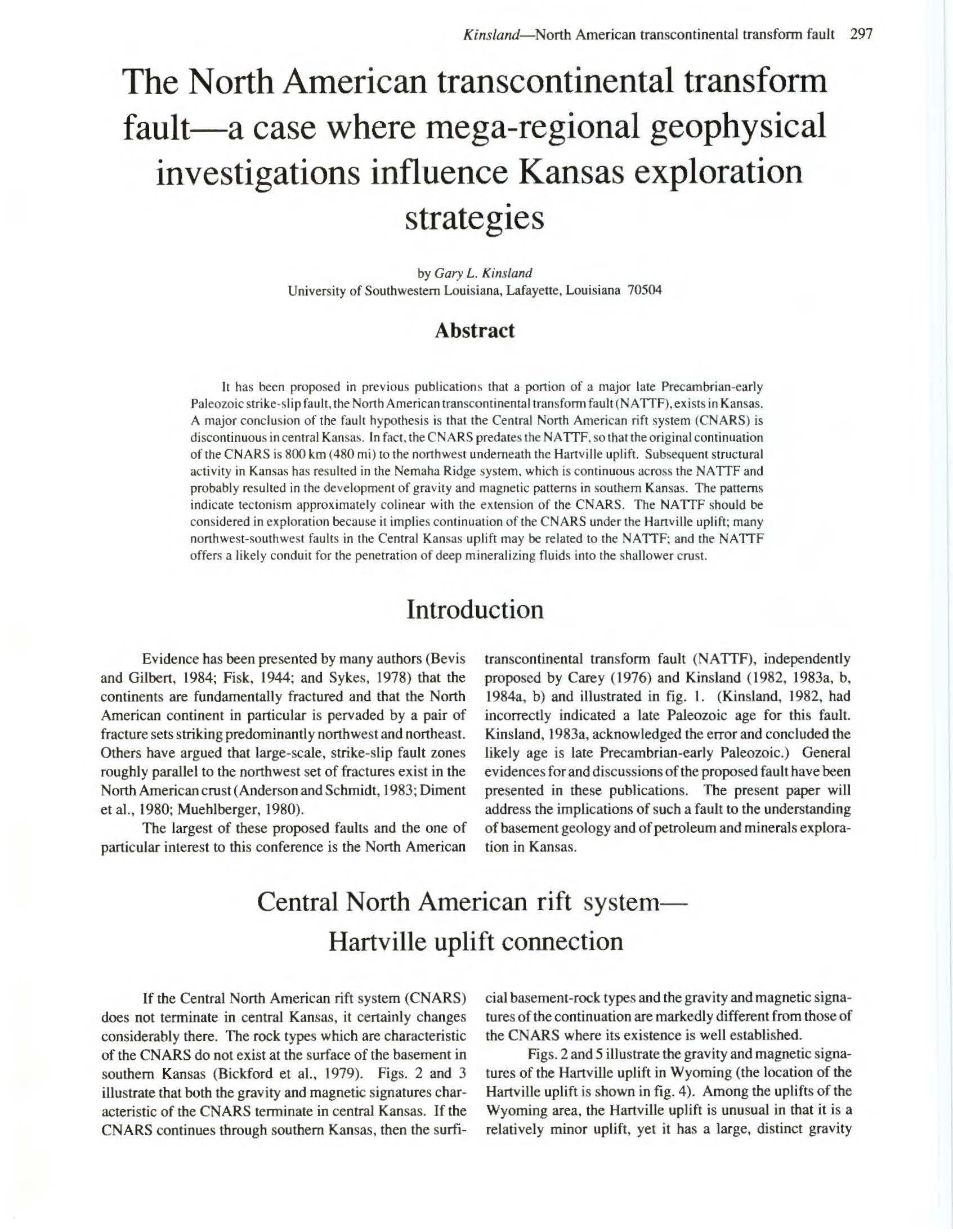The North American transcontinental transform fault--a case where mega-regional geophysical investigations influence Kansas exploration strategies
DOI:
https://doi.org/10.17161/kgsbulletin.no.226.20509Abstract
It has been proposed in previous publications that a portion of a major late Precambrian-early Paleozoic strike-slip fault, the North American transcontinental transform fault (NATTF) exists in Kansas. A major conclusion of the fault hypothesis is that the Central North American rift system (CNARS) is discontinuous in central Kansas. In fact, the CNARS predates the NATTF. so that the original continuation of the CNARS is 800 km (480 mi) to the northwest underneath the Hartville uplift. Subsequent structural activity in Kansas has resulted in the Nemaha Ridge system. which is continuous across the NATTF and probably resulted in the development of gravity and magnetic patterns in southern Kansas. The patterns indicate tectonism approximately colinear with the extension of the CNARS. The NATTF should be considered in exploration because it implies continuation of the CNARS under the Hartville uplift; many northwest-southwest faults in the Central Kansas uplift may be related to the NATTF: and the NATTF offers a likely conduit for the penetration of deep mineralizing fluids into the shallower crust.
Downloads

